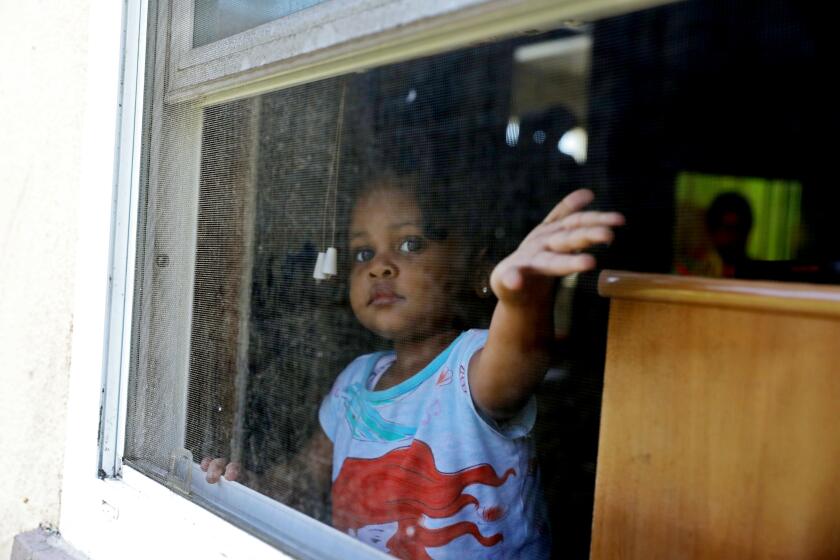Santa Barbara’s Council Eases Public Sleeping Law
- Share via
SANTA BARBARA — The City Council voted 4 to 2 today to relax its public sleeping law less than two weeks before a homeless protest threatened to draw thousands of demonstrators from around the nation.
The vote came after public testimony in the packed council chambers, where more than 300 people gathered to hear the debate on the proposal, which will allow nighttime sleeping in some public areas, including four city parks.
The council had been under pressure to resolve the issue before Sept. 1, the date set for a massive rally and sleep-in organized by Mitch Snyder, who runs a shelter for the homeless in Washington, D.C.
The controversy has drawn special attention because Santa Barbara is in the shadow of President Reagan’s mountaintop retreat, where Reagan is vacationing until Sept. 8. The city is flooded with reporters from around the nation.
Since 1979, Santa Barbara has had a law that prohibits sleeping anywhere in public between 10 p.m. and 6 a.m.
Snyder contends that law discriminates against the homeless.
“If you were to pick one city in the country to be a model of how not to deal with its homeless, Santa Barbara would be it,” Snyder says. “The attitude and atmosphere of real hostility toward the homeless in Santa Barbara is unparalleled.”
But Donald Olson, city housing development supervisor, says the criticism is unfair. Olson says the city spent $160,000 last year on programs to aid the homeless, including $40,000 for a shelter.
Last week, the City Council tentatively approved the plan authored by Councilman Hal Conklin that would permit overnight sleeping in four parks and some other public areas but would continue to prohibit it on the beach and near residential areas.
Among the most outspoken opponents to the change is the Chamber of Commerce, which recently took out a full-page ad in the local newspaper urging citizens to “let (the council) know, in no uncertain terms, what we, the residents of Santa Barbara, want.”
In December, 1984, transient Kenneth Burr was shot to death as he slept near the city’s railroad tracks, and a leaflet warned transients: “You are not welcome here. . . . I will make life difficult for you as I did Mr. Burr.”
Eight months later, a military school cadet killed another transient sleeping in a park gazebo, and the homeless were outraged that the youth was convicted only of second-degree murder.
More to Read
Sign up for Essential California
The most important California stories and recommendations in your inbox every morning.
You may occasionally receive promotional content from the Los Angeles Times.






